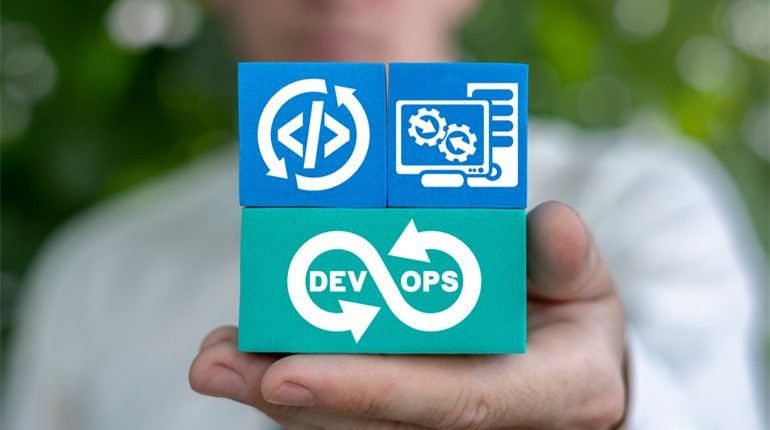DevOps is a combination of software development and operations. The practice entails breaking down barriers between development and IT, and encouraging collaboration and communication.
There are five DevOps practices that must be followed in order to create a successful DevOps environment.
1. Automate Everything
This one may seem obvious, but the fact remains that DevOps environments must be fully automated or close to it. When every task can be reduced to a series of button clicks or a simple drag and drop, there is no room for errors or unexpected delays. These buttons and clicks must be done by someone other than the person actually performing the task. Otherwise, you may end up with an unexpected outage or unsatisfactory result.
What does this mean in practice? It means that instead of having developers build, test, and deploy applications manually, they should be able to do this with the click of a button.
This is where continuous integration and continuous delivery (CI/CD) automation tools such as Build pipelines, like Jenkins, come in. With these tools, developers can configure automated tests and deployment steps, and get notified of errors and delays. In the event of a conflict, the developer can resolve it and re-deploy the application with the click of a button.
2. Separate Logic And Presentation
It is essential for any digital product that the interface be simple and clean. The fewer steps necessary to do a task, the better. This is especially important in the case of application interfaces, as the fewer possible errors that can occur, the better. Users should not have to take a course in computer science in order to perform basic tasks in your application.
For example, users should not have to know that a folder called “images” exists in their hard drive, or that a program called “photobooth” exists. These are all logical, fundamental parts of the interface that the user needs in order to perform a task. However, these are all elements that can be presented in a simpler manner than the actual directory structure or the name of the application.
The less chance there is of anything going wrong, the fewer unexpected problems that can arise. These types of problems can be difficult to track down if you don’t have the right tools for the job. For example, if there is a bug in the code that handles file uploads, it may be difficult to find without proper tooling. However, if you have automated tests that can detect this type of issue, it will be much easier to locate and fix it.
3. Use Domain-Specific Languages
Similarly, the code behind any application or website must be precise and easy to follow. This is especially important in the case of back-end code, as well as any other code that a developer may need to look up or research. Access to helpful documentation can also be an important factor in keeping track of what tasks need to be performed, as well as maintaining a good working environment.
Instead of using an all-encompassing programming language such as JavaScript or Java, use domain-specific languages (DSL), whenever possible. This makes the code easier to understand and maintain. It also means that there are fewer possibilities for errors or omissions.
These languages make it easier for developers to write modular code, which can be tested individually and in combination with other modules. This keeps bugs to a minimum, and makes the process of updating applications or websites a lot less invasive.
4. Make Data And Metrics Visible
As applications and websites get more complex, so does the amount of data necessary to track their operation. This data can be used to determine how well the application or website is performing, and whether or not changes made to it have had the desired effect.
In many cases, the actual data can be quite difficult to understand; therefore, making it easier for others to track and analyze it. This can be done by putting the data into visual form, or by using charts and graphs to make it easier to understand.
When everything can be tracked and monitored in real-time, it’s possible to make adjustments and enhancements as soon as they’re needed and make the entire process more efficient. This reduces the need for future maintenance, and increases the overall reliability of the application or website.
5. Identify Critical Paths
To create a solid foundation for the DevOps process, it is important to identify which parts of the process are the most critical. These are the parts that must be done first, and with the most meticulous attention to detail. Once these critical paths have been identified, it’s easier to determine where to focus your efforts, and how to best utilize the available resources.
You must be able to identify the end-to-end process, and the parts of it that could potentially go wrong. Once these points have been established, it’s possible to work backwards and determine the tasks needed to complete the process. It also makes it easier to determine which parts of the process can be automated, and which require human interaction.
For example, in the case of an application that allows users to purchase items from a catalogue, there is a lot of human interaction required to verify the order, and make sure that it gets delivered. However, in the case of a delivery service, this is an extremely automated process, and could be handled by a software agent.
One advantage of this approach is that it allows you to establish priorities. For example, it may be necessary to have someone on-hand to verify the order for a complex system that handles financial transactions, or it may be possible to have this type of interaction handled by software agents. When determining priorities, it is important to weigh the relative importance of different aspects of the business.
For example, the security of the site may be more critical than the speed of the site, in the case of a shopping website. The ability to scale may also be important in the case of a business that offers online marketing services to a large number of customers. In these cases, it may be necessary to have someone available to monitor the performance of the site, and to address any outages or slowness. Otherwise, the business may lose a sizable amount of revenue.
Once these five practices have been followed, it’s possible to establish a DevOps environment that is both secure and efficient, and that promotes individual responsibility. DevOps-as-service firms like DuploCloud make sure to go above and beyond in order to comply with these practices, for more click here: https://duplocloud.com/solutions/devops-as-a-service/



